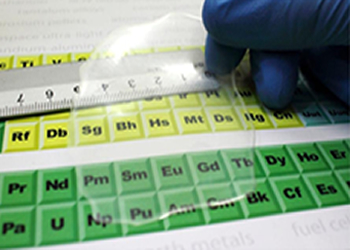 Considering the outmost attention put by the European Community on biodegradable and renewable plastics, the cellulose nanopaper (CNP), consisting of transparent and flexible paper sheets that are completely biodegradable, can find straightworward technological application in packaging, coating and many other applications.
Considering the outmost attention put by the European Community on biodegradable and renewable plastics, the cellulose nanopaper (CNP), consisting of transparent and flexible paper sheets that are completely biodegradable, can find straightworward technological application in packaging, coating and many other applications.
Nanopaper is a self-standing transparent film, that can be produced by deposition of nanocellulose crystals or fibers. With regard to chemical composition, differently from ordinary paper, nanopaper is formed only by crystalline cellulose, and has negligible content of amorphous cellulose, lignin or hemicellulose. Being a highly pure and crystalline material, composed as well by nanodimensioned objects, it presents new properties, including transparency, but also high specific surface area (SSA).
Nanopaper presents high flatness, especially if compared to normal paper, that makes it suitable as a substrate for organic electronics thin film devices. Its potentialities in printed electronics, whose market is estimated to be $73 billions in 2025, are one of the aspects that make CNP a very interesting product for future industrial developments.
Copyrights of this article belong to Alessandra Operamolla. All rights reserved.
